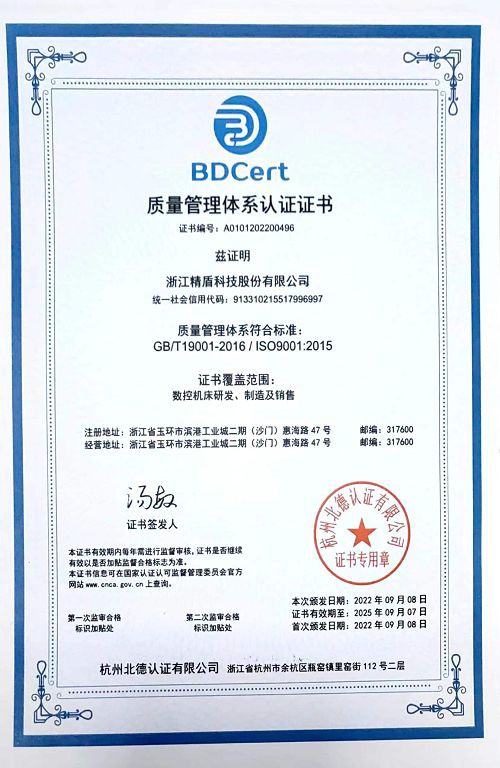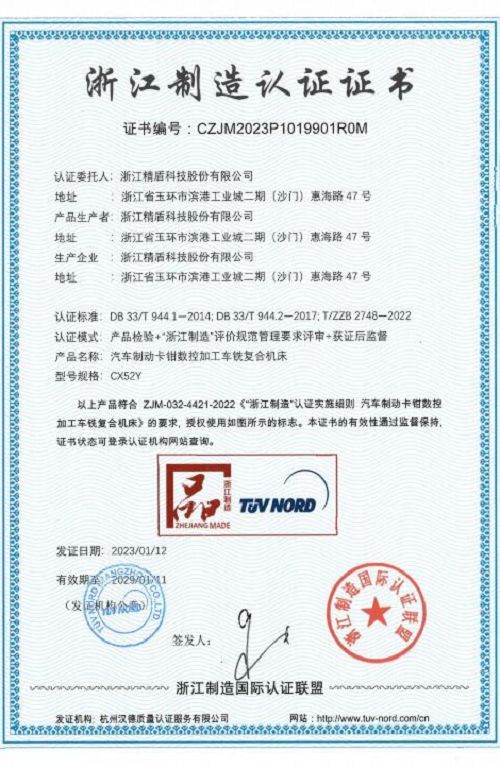why choose us
'lt is awesome to work with Creative. amazingy organized,easy to communicate with. responsive with next iterations,and beautiful work.
Professional Team
We have a team for sales engineer and aftersales, service. This team focus on give customer a good experience.
Competitive Price
We have different series, covered high, middle, economical class with super high performance-price ratio.
Rich Experience
We are professional machine tool manufacturer. You may check with us for most suitable solutions.
Quality Assurance
Strict detection during production. Strict sampling inspection on products before shipment and intact product packaging.
What is Forging Machine
A forging machine, often referred to as a hammer or a press, is a critical piece of heavy machinery used in the metalworking industry to shape metal parts by applying compressive forces. Forging is a manufacturing process that involves the deformation of metal through localized compressive forces, either through hammering or pressing.
Benefits Of Forging Machine
Increase in strength
During forging machining, the metal structure is compressed, creating reduced stress on the fillets and corners. This, in the long run, increases the strength of the piece.
Reduces the defects
Metallurgical defects like alloy segregation and porosity reduce during forging. This, in turn, lowers the time for machining the completed material.
Saves on costs
Forging machining saves a lot of costs. It saves on the raw material used, reduces machining time and the reclamation of the die material. Therefore, you won’t spend a lot on material since raw material can be used again.
High productivity
Forging presses comprises a wide tonnage ranging from hundreds to thousands with working strokes every minute of 40 or 60, which is 40 to 60 parts each minute. Forging machining can be used in the mass production of rivets, nuts, screws, bearing races, brake levers, valves, etc.
Gives complex designs
It is undoubtedly true that forging machining produces the unique designs you want. During forging, complex and complicated designs having excellent accuracy are produced. Besides, deep protrusions with high thickness can be produced. Draft angles are also eliminated by design.
Ease of use
An essential advantage of these devices is their ease of use. Manufacturing operations can be carried out by a specialist of any qualification with basic skills in handling industrial equipment. The drives of the machines are designed so that the deformation of the rolled metal is not time-consuming. This moment ensures the accuracy of forging and obtaining products of a given geometry.
Hot-Selling Metal Forging Machines
Hammers
Although most consumers think of hammers as tools used to drive and uproot nails, forging hammers have unique designs for shaping and forming metals through continuous strikes. Forging hammers often feature high-quality steel, which helps to withstand the high force and heat generated during metal working.
Presses
Mass production often requires metal forging machines capable of exerting a much higher force than hand hammers. One type that checks the list is the press. Interestingly, consumers often use presses for open and closed-die forging. These machines can also create intricate metal designs due to their high accuracy level.
Upsetters
Upsetters are specialized machines used for increasing metal diameter and reducing metal length. Interestingly, these machines use the upsetting process to create projects like shaft shoulders.
Ring rollers
Ring rollers are metal forging machines with one specific purpose: creating ring-shaped parts. Crafting things like rings and gears require special machinery, and these machines are up for the challenge.
Metals Used In a Forging Machine




Steel
Steel needs to be heated to 2200°F (1200°C) to be able to press forged. The heating process makes steel more ductile and malleable for shaping under pressure. A billet of steel can be permanently formed without cracking because of its plasticity.
Aluminum
Aluminum is ideal for forging because it is lightweight, corrosion resistant, and durable. Forgings of aluminum are used in applications requiring performance and the ability to endure excessive stress. Aluminum has high thermal conductivity, design flexibility, and fracture toughness. It can be forged using open or closed dies and does not require preheating before being forged.
Titanium
Titanium has excellent weight-to-strength and strength-to-density ratios and corrosion resistance. Prior to press forging, titanium is heat-treated to improve its natural toughness and strength.
Stainless Steel
As with several other metals, stainless steel is corrosion resistant, has excellent strength, and can be forged into multiple shapes. Of the many grades of stainless steel, 304(L) and 316(L) are used for press forging. Stainless steel requires greater pressure due to its strength and is forged at temperatures of 1706°F to 2300°F (930°C to 1260°C).
Brass
After being cut to lengths, brass is heated to 1500°F (815°C) and is forged using a closed or open die. Brass can be shaped into any type of form from a few ounces to several tons. Forged brass is stronger and more durable.
Copper
Copper bars are heated prior to the forging process. After heating, the bars are pressed into the desired shape. Forged copper has excellent electrical and thermal conductivity. Copper forgings are divided by high conductivity and non-electrical, which is an engineering grade.
Magnesium
Magnesium has a low density with strength and stiffness that is greater than steel or aluminum, but it costs more and is difficult to forge. The magnesium alloys that are best for forging are AZ31B, AZ61A, AZ80A, ZK60A, M1A, AND HM21A. The problem with pure magnesium is its tendency to ignite, which is why it is used in combination with other metals.
Understand the different forging techniques
Purchasing metal forging machines depends on different methods and processes, which consumers will use to shape and form metal. Several techniques work for forging metals, including open die, closed die, and hot and cold forging.
Choose the preferred forging type
Factors such as metal properties, the scale of production, and the desired final product will influence consumers’ preferred forging type. For example, aluminum is lightweight and heat-treatable, making it a good choice for closed or open-die forging. Steel, on the other hand, is sturdy and requires heating. Thus, an optimal combination includes combining hot hammer forging with press or roll forging.
Determine the target consumer’s requirements
Metal forging machines are functional in various industries, like automotive, construction, aerospace, electronics, medical, and architecture. Every industry has its requirements, which determine what metal forging materials consumers will demand.
Size and material of forging parts
Another factor determining the type of metal forgers to form is the forging parts’ size and materials. Generally, consumers may opt for industrial-sized metal forging machines when working with larger metal pieces that require mechanical strength.
Important Safety Considerations Of Forging Machine
Electrical: Presses must have a disconnect switch, motor starter, and a transformer for reducing voltage
Covers: Shafts, crankshafts, pulleys, sprockets, rolls, flywheels, gears, and couplings must be covered.
Side Barriers: Side barriers include light curtains to prevent standing near the point of operation.
Guards: If light curtains are not being used between the operator and point of operation, then guards should be installed.
Danger Signs: Warning signs should be mounted on the device and must be clearly visible.
Hand Tools: Hand tools should be used when feeding or retrieving pieces from the equipment.
Mirrors: Mirrors should be mounted on the sides and back of the machine.
Two Hand Controls: Two hand controls are necessary for single stroke devices.
Pullback or Pullout Devices: Pullbacks, attached to the operator‘s hands, pull the operator‘s hands away from the machine when it begins its stroke.
Restraints: Restraints operate on the same principle as pullbacks and are adjusted so the operator can never reach the point of operation.
Gates: Gates can be type A or type B. A gates are used in full revolution presses, while B gates are used in partial revolution presses. A gates must be closed before press operation begins and must remain closed. B gates protect the operator on the down stroke.
Types of Forging Machine
Drop forging machines produce complex shapes by dropping heated metal into a punch and die that gradually compresses the part. The punch's ram causes this malleable metal to conform to the shape of the punch and die cavities. Power hammers or drop hammers, as drop forging equipment is known, may use pneumatic, hydraulic, or electrical power. The dies and punches may be flat or V-shaped, and the striking force can range from 11,000 to 425,000 pounds (lbs). Because only one ram is needed to form the part, flash is produced and needs to be trimmed.
Open die forging machines are used with ingots, billets, bars or preforms. They deform the workpiece between flat or shaped dies without completely restricting metal flow. This results in the lengthening of the workpiece while reducing its cross-section. Using multiple impacts, lengthening and upsetting can be achieved. Metal parts can range from a few centimeters (cm) to 30 meters (m) in length, and weigh from several to several hundred thousand kilograms (kg). Open die forging machines can used to make fairly complex shapes, but are usually used to produce simple solids or hollows that considerable machining to achieve their final shape.
Closed die forging machines do not require the formation of flash to ensure the complete filling of the die. The metal is deformed in a cavity that does not permit the escape of excess material, which places greater requirements on proper die design.
Isothermal forging machines heats materials and dies to the same temperature. To prevent oxidation, it is usually performed on superalloys in a vacuum of highly-controlled atmosphere.
Optimizing Forging Machine Productivity, Longevity
As the forging industry’s most experienced maintenance staff and equipment operators retire, keeping legacy machines producing at full capacity is increasingly difficult. When new employees lack sufficient expertise, and decades-old forging equipment breaks down, the result can be very costly, extended downtime.
Based on the results of the health check, the OEM suggests corrective actions to restore the equipment back to OEM specifications, along with a customized, ongoing, preventive maintenance program for hydraulic presses, as well as consumables like filters, and oil sample analysis.
The PM program can be scaled up or down to take into account the maintenance team’s experience, availability, and turnover.
The program can serve as a teaching aid to help the forger build its maintenance team. This can not only increase the team’s self-reliance, but also minimize any downtime.
Although PM is typically performed onsite, some actions can be completed remotely. utilize advanced collaboration tools and real-time video communications to connect with technicians where both can see, discuss, annotate, and resolve many situations at hand.
To ensure the highest production uptime of forging equipment and prevent lengthy unexpected downtime, a separate stocking program of consumable and key items is also typically available as an option.
Certifications












Our company sell products and also sell service,we think service is very important during the trading,we have a team for sales engineer and aftersales, service.This team focus on give customer a good experience.For supplier,we choose supplier with good quality and service,according to the user feedback,we had got the information which supplier is good which is bad.As a trading company,we can give u the good price because our quantity is big and we have experience to choose supplier and introduce the best supplier to customer.chance in your hand,give chance to our company is also give yourself a chance to get the best supplier.
FAQ
As one of the leading forging machine manufacturers in China, we warmly welcome you to wholesale cheap forging machine for sale here from our factory. All customized products are with high quality and competitive price. Contact us for more details.
Brass Ball Valve Forging Machine, Metal Hot Forging Press Machine, Brass Valve Forging Machine


